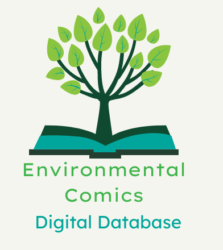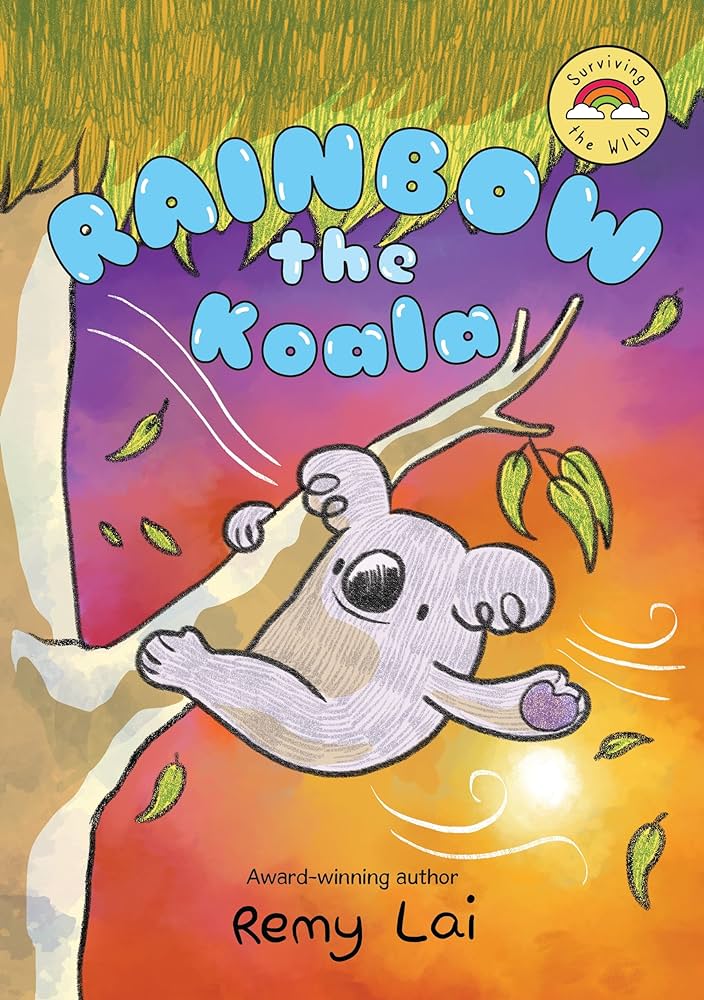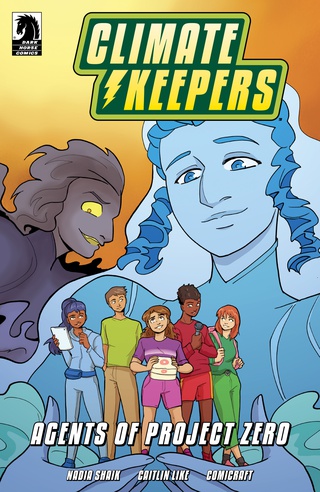“Plastic nets have no feelings, they take everything and they never break. You have lost your connection to the sea. You say you only take what you need, but you seem to need more now” – Aure, Aquicorn Cove, p. 60.
| Creator(s) | K. O’Neill (author and illustrator) |
| Publisher | Oni Press |
| Publication Date | 2018 |
| Genre | Fantasy |
| Environmental Issues and Themes | Animals in Danger, Animal Rescue, Climate Change, Coral Reef Bleaching, Environmental Justice, Ocean Conservation, Overfishing, Plastics, Pollution, Sustainable Living |
| Protagonist’s Identity | Lana: A white tween girl with red hair |
| Representation | The comic features a multiracial cast of characters with different skin tones. Additionally, Mae is depicted as queer, and Aure identifies as nonbinary |
| Protagonist’s Level of Environmental Agency | Level 5: High Environmental Agency and Activism |
| Target Audience | Middle Grade |
| Settings | An unnamed rural village on the coast an ocean |
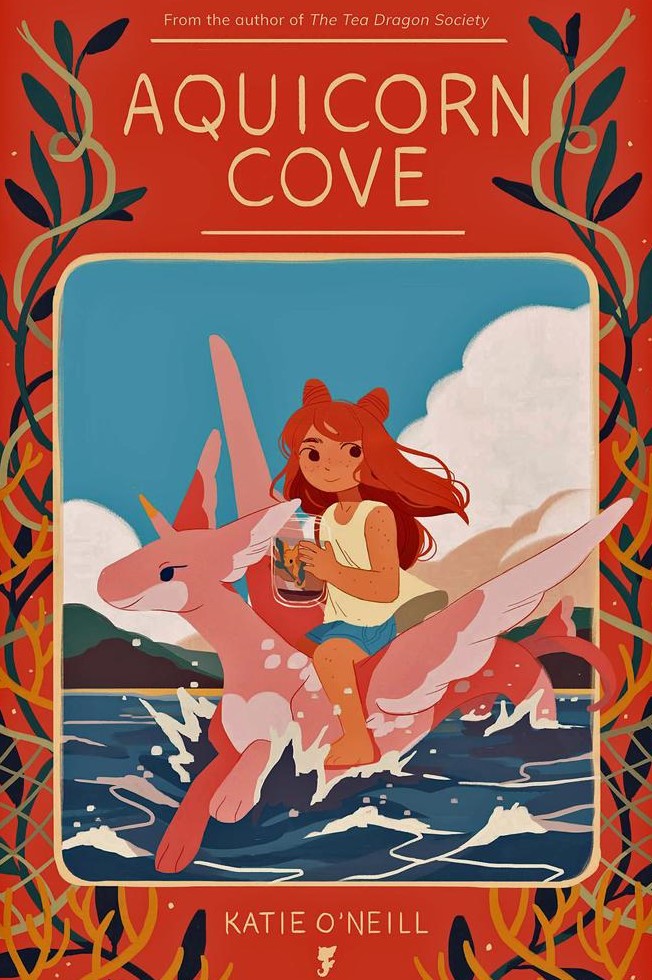
Environmental Themes
Aquicorn Cove centers on young protagonist Lana as she returns home to her storm-ravaged, nameless village and rescues an injured baby “Aquicorn,” an adorable seahorse-unicorn hybrid. Soon, Lana discovers that the village’s unsustainable fishing practices have contributed to coral bleaching and endangered the Aquicorn population. Aure, the Aquicorn’s mermaid-like guardian, highlights the ways that the villagers have damaged the reef, saying, “The sea is getting warmer and dirtier, and the coral is dying. You are a small village, so I do not think you can change that. But even a small village can hurt us” (O’Neill 59). Lana’s Aunt Mae–and Aure’s on-and-off lover–initially resists this warning, justifying the village’s harmful environmental practices by highlighting the economic necessities motivating their actions, insisting, “We have to bring money to the village, or it won’t survive” (O’Neill 60). Moreover, she underscores the apparent powerlessness of small groups of people to enact meaningful environmental change, stating, “My village is a speck in the ocean! You’re asking us to sacrifice our livelihood for what? Barely making a difference” (O’Neill 61). By bringing issues of economic survival and inequality to the forefront, rather than simply vilifying the humans, the comic draws attention to the larger systemic issues threatening the oceans.
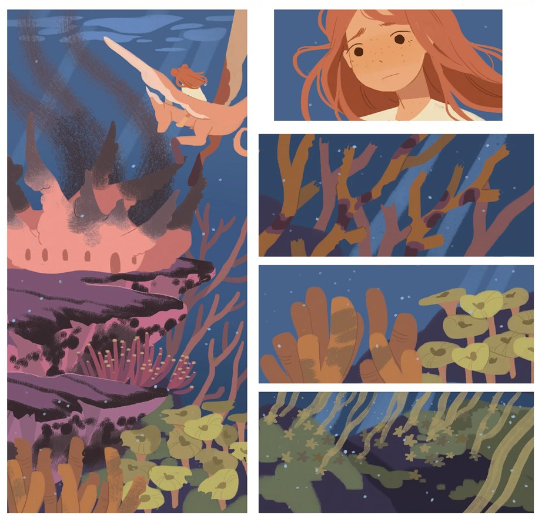
Though Mae initially resists Aure’s message, Lana later realizes that the dying reef no longer protects the village from powerful storms. She convinces Mae that the humans need to save the reef to protect themselves, saying, “[I]f the reef dies, I think our village will die too” (75). After this intervention from the child protagonist, the comic concludes with the adult villagers promising to destroy their plastic nets and return to the traditional, small-scale fishing practices used by their ancestors. The villagers also plan to develop new, more sustainable ways to earn income instead of relying primarily on fishing. By portraying the villagers compassionately working with nature to develop mutually beneficial solutions and by framing Lana as an empowered activist who spurs these changes, O’Neill encourages children to advocate for more environmentally friendly, harmonious futures. Additionally, the comic includes positive queer representations, with Mae and Aure resuming their romantic relationship at the conclusion.
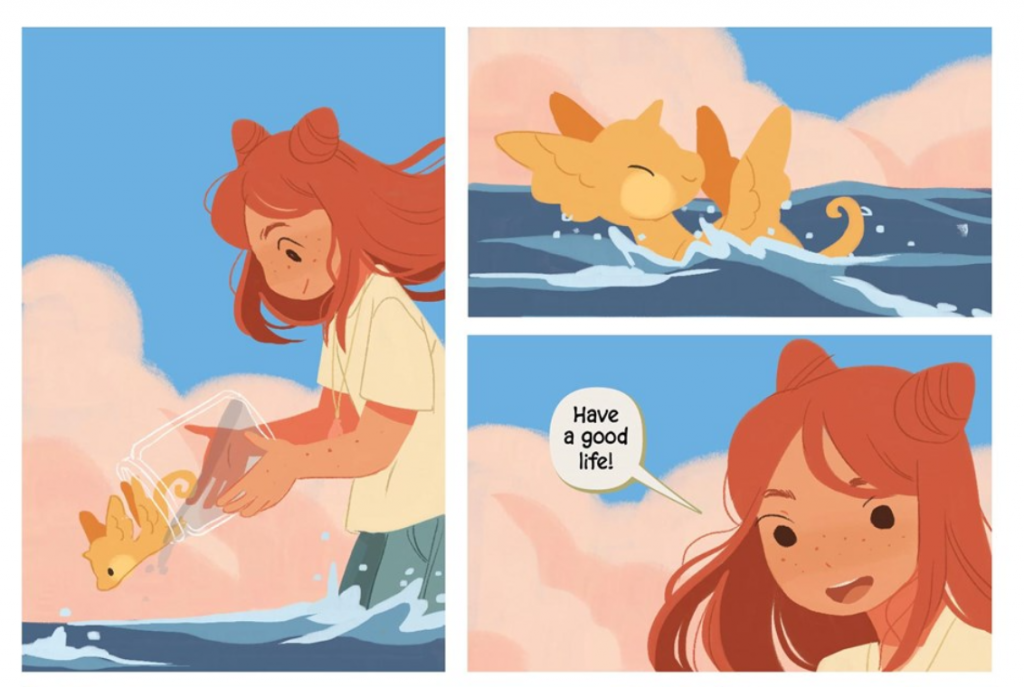
The comic has been adapted into a board game for ages 10+ that challenges players to grow their village while also restoring a reef ecosystem. Environmental themes also feature prominently in other comics created by K. O’Neill, including Dewdrop, The Tea Dragon Society, The Tea Dragon Festival, and The Tea Dragon Tapestry.
Paratexts
The comic includes three pages of supplemental backmatter that reinforce the primary narrative’s environmental messages. This educational paratext includes information about coral reefs and ways that human actions are damaging them, actions that young readers can undertake to help the reefs, and links to the Coral Reef Conservation Alliance and the UN Environment.
Additional Resources
Anderson, Brianna. “A “Gentle Fantasy” of Ocean Conservation: Environmental Justice in Aquicorn Cove.” The International Comic Arts Forum, 3 December 2020, http://www.internationalcomicartsforum.org/icaf-2020-virtual-conference-blog-posts/a-gentle-fantasy-of-ocean-conservation-environmental-justice-in-aquicorn-cove.
Pursall, Dona. “Growing Stronger Together. Representations of Active Eco-Citizenship within Contemporary Comics.” Closure: Kieler e-Journal für Comicforschung, issue #7, 2020, pp. 43–65.
